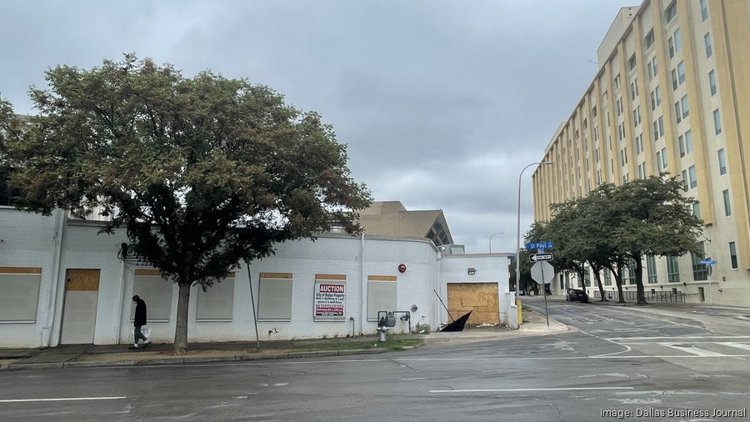DALLAS — This article was originally published by our content partners at the Dallas Business Journal. You can read the original article here.
The historical significance of a neglected downtown Dallas building that was once a family homeless shelter adds another wrinkle to attempts to sell it.
Just a few weeks after Dallas City Council voted to move forward with a sale, a preservation organization notified council that the property at 711 S. Saint Paul St. is listed in the National Register of Historic Places.
The property is in the Dallas Downtown Historic District, according to National Register documents from 2009, when the district's boundaries were expanded to include this site among several others. The historic district also includes the Scottish Rite Temple on Harwood Street and the Neiman Marcus building on Main Street. The area’s developments trace back to sometime in the 1880s.
However, according to information from the National Register, this doesn’t necessarily affect what government leaders can do with the property. The federal agency does not place any restrictions on what a future owner can do with the site.
Instead, leaders from Preservation Dallas are pointing out that the next owner could take advantage of tax incentives to rehabilitate the building — perhaps even making it more valuable.
Efforts to sell the building come as developers and city leaders wrangle with the future of downtown Dallas. Dotted with historic buildings as well as older, sometimes dilapidated buildings, downtown also boasts high-rises and contemporary office and retail space, fusing the old with the new. But plans to replace the old with the new can at times dominate the conversation when it comes to reimagining Dallas' urban core.
What’s also interesting about the building on Saint Paul Street is its proximity to Dallas City Hall, where council meets. The abandoned property lies in the shadow of the government building on Marilla Street.
After plenty of back and forth between city officials, council on Aug. 28 voted 12-2 in favor of a two-tier approach for the sale of the property — allowing potential buyers to bid on the site as is, as well as bid as if the building were demolished. According to Dallas Central Appraisal District records, most of the value for the sites comes from the land alone, which is appraised at about $1.5 million.
Council Member Jesse Moreno, who was behind the effort to sell the site, said the building is often breached and occupied by squatters. Ongoing walkthroughs of the site have revealed several biohazards, graffiti markings and code violations. City leaders said it is unclear why exactly the former tenant vacated the facility.
Moreno said an interested buyer would likely want to demolish the building, adding it’s in the best interest of the city to clear the land so that it can be "developed appropriately to its best use."
"We want to be more resourceful. This is just not the best use for that area," he said in the meeting. "What I don’t want to see is the building continue to be vacant and then have another incident of vandalism."
Council members did not seem aware of the building's historic significance during their August meeting. An email to city council and the mayor from Ron Siebler, Preservation Dallas president, pointed out its historic ties.
Built in 1947, the one-story, 22,500-square-foot building was originally home of American Optical, Siebler said in his email, a copy of which was obtained by Dallas Business Journal. The company manufactured artificial eyes and bifocals and repaired optical machinery at the facility. The building, which served as the company's regional headquarters, cost around $400,000 to construct, according to National Register documents.
In the early 1980s, the City of Dallas became interested in the site. It soon purchased the building for Family Gateway, and a few modifications were made.
Properties listed on the National Register are eligible for federal and state tax credits for rehabilitation costs, up to a combined total of 45% of qualified expenses, Siebler said.
"As preservationists, we see that as an opportunity, an economic incentive that actually might present a higher sales price," he said in an interview, adding Preservation Dallas recognizes that conserving a building must also make economic sense.
Moreno said in the August council meeting that as the city re-envisions its downtown, it should prioritize creating density by redeveloping sites such as this one.
"This is a building that has become a magnet for activity that's not desirable in any neighborhood," he said. "As we continue to develop the south side of downtown Dallas, it's imperative that we have a clean and safe environment."
Dallas City Council is on track to move forward with plans to sell the building, with an auction date tentatively set for Oct. 2, according to a Sept. 6 memo.



